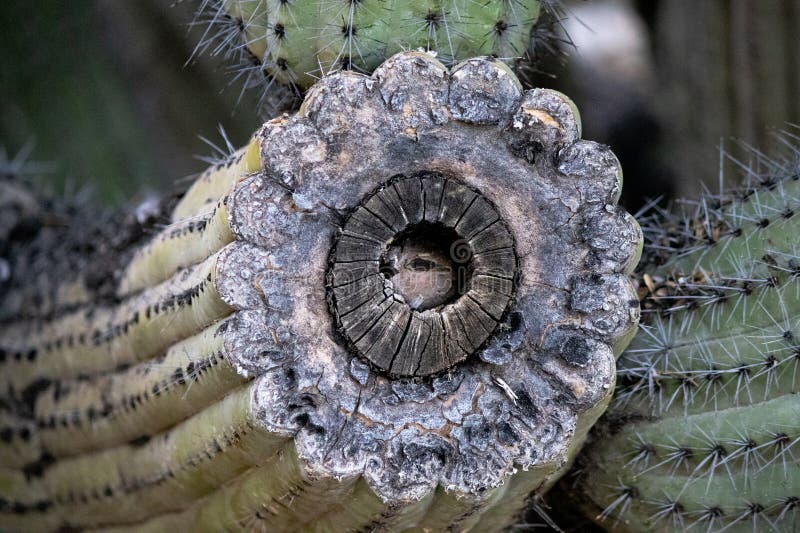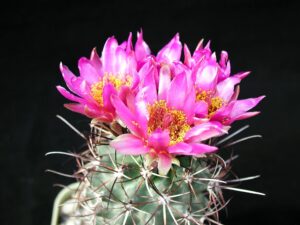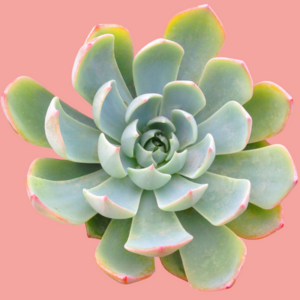To the uninitiated, a cactus is merely a spiny sentinel of the arid landscape, a symbol of resilience. However, delve deeper, and one uncovers a world that is as complex as it is mesmerizing. The interior of a cactus, often hidden from plain sight, is a treasure trove of botanical intricacies. Exploring what lies within these prickly exteriors unveils a narrative replete with survival, adaptation, and unique biological wonders.
When one considers the internal architecture of a cactus, it becomes clear that these plants have evolved astonishing mechanisms to thrive in the harshest environments. The true essence of a cactus lies not just in its resilience to drought but in the sophisticated systems within that allow it to endure and even flourish.
The Vital Role of Succulence
At the heart of every cactus is its succulent tissue, a miracle of nature that stores water efficiently. This specialized tissue is not merely an adaptive feature; it represents the very lifeblood of the cactus. Picture a sponge brimming with life, waiting to release moisture during parched periods. Succulent tissues consist of parenchyma cells that are imbued with vacuoles, which swell with water, ensuring that the cactus can survive extended dry seasons. This adaptation allows the cactus to act as a reservoir, not only for itself but also for surrounding flora and fauna.
Interestingly, the typical structure of a cactus is designed for maximum water retention. The rigid exterior, adorned with spines, is a defensive armor, deterring herbivores while simultaneously providing a microhabitat. Within the plant’s interior, a complex network of capillaries aids water distribution, reminiscent of a highway system channeling precious resources to different parts of the plant. Without this intricate system, the cactus would be unable to endure the inhospitable conditions of its native habitats.
A Ramble Through Cactus Cavities
As one ventures beyond the succulent tissues, the interior vapors in a cactus reveal an enchanting array of cellular structures. Some cacti are celebrated not just for their exterior forms but also for their spectacular interior landscapes. The central cavity, often referred to as the “pith,” is a pulpy mass that can vary dramatically between species. In some, this hollow core serves as an additional reservoir, fortifying the plant’s ability to withstand long droughts.
Additionally, the walls of this cavity are typically infused with fibers that lend structural integrity, akin to the ribs of a ship that hold its hull against the onslaught of the waves. This fibrous framework provides sturdiness, allowing the cactus to stand tall, even amidst fierce winds. The juxtaposition of strength and vulnerability in these internal frameworks reflects a duality that is emblematic of the cactus’s existence.
Significance of Chlorenchyma: The Green Gold
Another critical layer within the cactus structure is the chlorenchyma, a tissue teeming with chloroplasts responsible for photosynthesis. Contrary to many traditional plants that spread their green leaf structures outward, cacti employ a distinctive strategy. Their green skin utilizes the surface area of their exterior to perform photosynthesis, but this is augmented by the sunlight filtering into the interior cells. This unique arrangement allows them to optimize light absorption, ensuring they can harness energy even where competition among plants is fierce.
The chlorenchyma embodies a rich tapestry of life; it is here that sunlight becomes food, converting the ephemeral energy of the sun into sustenance. It serves as an ever-busy factory, synthesizing necessary nutrients that support not just the cactus itself but also the myriad of organisms that depend on its existence. Without complex interactions like these, the ecological web of arid ecosystems would falter.
Symbiotic Relationships: The Supportive Layer of Life
Inside many cacti, a whole other world exists — one populated by microscopic organisms and beneficial fungi, forming mycorrhizal networks. These multifaceted partnerships enhance nutrient uptake, further turning the cactus into a meaningfully interconnected entity within its ecosystem. The relationship between the cactus and its subterranean allies is akin to a dance, each participant enhancing the other’s capabilities, ensuring survival in an unforgiving realm.
The intricacies of the interior of a cactus are more than just biological marvels; they speak to a broader narrative of life and adaptation. As one contemplates the interior of these botanical wonders, it becomes abundantly clear that cacti stand as beacons of resilience, embodying the ability to evolve in the face of adversity while nurturing a complex web of life within themselves.
To summarize, the inside of a cactus is not merely a collection of tissues and cells; it is a microcosm of life, revealing profound adaptations to the most challenging circumstances. From the succulent tissues of water storage to the interdependent networks of nutrients, the internal structure of cacti serves as an enduring testament to nature’s ingenuity. The next time you gaze upon one of these remarkable plants, allow your imagination to wander beyond the spines and into the compelling world that lies within.





Leave a Comment